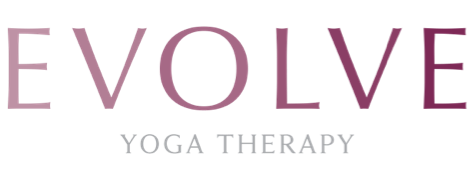Yoga for Menopause
Menopause is the time where many of us transition from the reproductive to post reproductive stage of life. The term menopause is classically defined as the 12 months after we have our last period and then we are considered post menopausal (there is evidence that suggests menopause can last longer than 12 months so use these definitions loosely). Perimenopause is classically defined as the time before menopause when our periods can be irregular due to hormone fluctuations (estrogen, progesterone, testosterone). I’m going to use Menopause to refer to this whole transition period.
Some people look forward to menopause, others don’t, some ignore it, some are highly attuned to it. All of our experiences are different in mind and body. As Petra Coveney writes in Yoga for Menopause, I consider it “an opportunity for self-insight and personal growth – a chance to heal emotional pain, make peace with the past, and befriend ourselves and body with self love so that we can step into post reproductive life feeling relaxed, renewed, and empowered.” It is also a time where we can practicer being more present and welcoming our experiences just as they are.
There are many symptoms associated with menopause – hot flushes, insomnia, mood swings, depression, anxiety, panic attacks, brain fog, irritability, joint pain & stiffness, breast enlargement and pain, heart palpitations, skin irritation, back pain, urinary incontinence or urgency, vaginal pain & dryness, migraines, less interest in sex, not feeling yourself and many others. Hormone replacement therapy as well as other medical approaches, natural remedies, nutritional changes, regular exercise, and stress reduction can help. Yoga can also help as its an empowering tool to manage symptoms as well as help us step into the next phase of life feeling whole, healthy and connected to ourselves and the world around us. Yoga can also help us with some of the risks women face post menopause including heart disease, Alzheimers, and osteoporosis.
PRACTICES FOR MENOPAUSE
Spine Breath with Mula Bandha
Why? To balance Vata, tone the pelvic floor, and help with vaginal dryness and pain. Vata is one of the bio-energy centers in our body. It is associated with ether and air and controls bodily functions as well as the mind. When Vata is unbalanced we can experience insomnia, anxiety, panic attacks, brain fog, joint discomfort, and irritability. This energy center gets unbalanced for many reasons including the menopause transition.
Spine Breath Meditation Below
10 Minutes – Practice every day for a month (combined with moving and breathing asana for 10 to 15 minutes) to see if it helps with hot flushes, insomnia, mood, headaches, panic attacks, brain fog, joint discomfort, vaginal pain/dryness and/or irritability.
Moving and Breathing Asana
Why? To balance Vata. Vata is one of the bio-energy centers in our body. It is associated with ether and air and controls bodily functions as well as the mind. When Vata is unbalanced we can experience insomnia, anxiety, panic attacks, brain fog, joint discomfort, and irritability. This energy center gets unbalanced for many reasons including fluctuating hormones.
We move and breath feeling the expansion & contraction of the abdomen (inhale expand and exhale contract), making the breath bigger than the movement (starting the inhale before we move and starting the exhale before we move), and lengthening the exhales.
Mountain Pose – Placing the hands on abdomen and expanding abdomen on inhale and contracting on exhale.
1/2 Sun Salutes – feeling abdomen expand on inhale and contract on exhale
1/2 Side Salutes – starting breath before moving
Moving and Breathing Chair – lengthening exhales
2-4 Sun Salutes – linking it all together
Held Asana Poses for a Minute with Attention to Breath
Why? To maintain or build bone density, become aware of overdoing and balancing with breath.
Holding poses that use the muscles of the legs, pelvis, arms, and shoulders for a minute each to maintain and increase bone density. Being aware of when heat start to rise and countering this by lengthening exhales (10 rounds of inhaling for 5 and exhaling for 7 makes up about one minute). If heat continues to rise, letting yourself rest. You can modify this to get stronger slowly. You might start by holding for a few breaths and build up week by week.
Locust
Down Dog
Forearm Plank
Chair
Mountain
High Crescent
Side Plank
Warrior 3
Warrior 2
Wide Legged Forward Fold
Goddess
Camel
Restorative Poses
Why? To practice letting go and welcoming life as it is.
Supported Bridge
Wide Legged forward Fold with Bolster
Twist with Bolster
Prana Nidra
17 Minutes – Practice every day for a month to see if it helps with hot flushes, insomnia, mood, headaches, panic attacks, brain fog, joint discomfort, and/or irritability.
ADDITIONAL RESOURCES
The Definitive Guide to the Perimenopause and Menopause by Louise Newson
Balance App from Louise Newson

